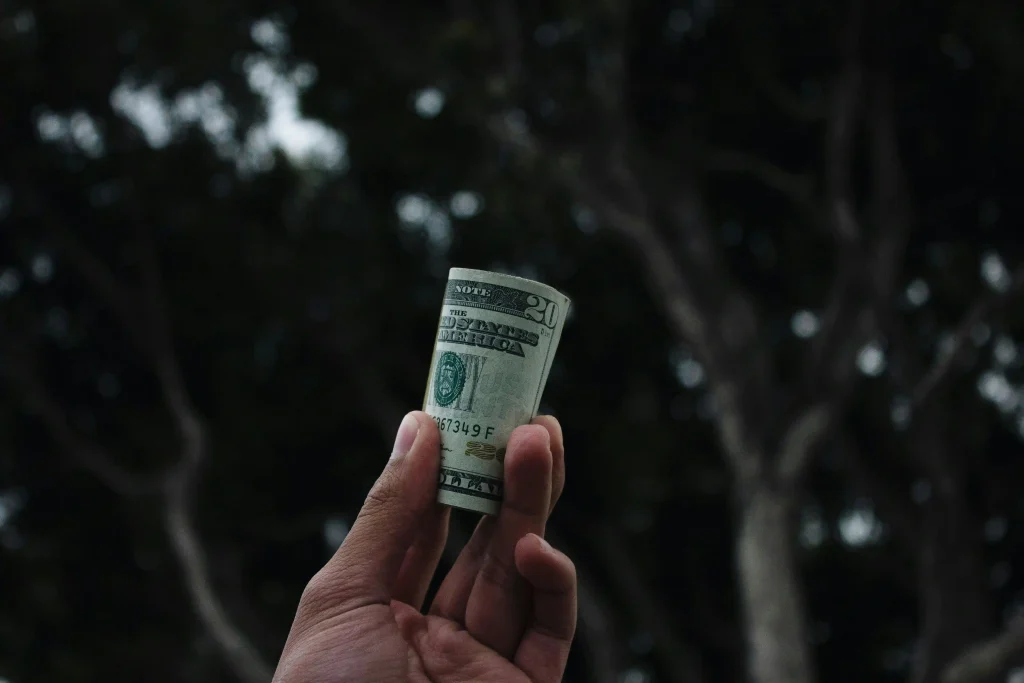30 Day Money Saving Challenge That Helped Me To Save $300+
I’ve always had a bit of a complicated relationship with saving money. I’m not reckless with it, but I’m definitely not someone who naturally sticks to budgets either. I’ve downloaded dozens of finance apps, made spreadsheets I never looked at again, and told myself “I’ll start saving next month” more times than I can count.
But earlier this year, I hit a point where I realized how uncomfortable it felt not having a cushion. A surprise car repair completely threw off my month. I didn’t have a backup plan — just stress and the hope that next month would be easier. That’s when I decided to try something super simple: a 30 day money saving challenge.
Nothing fancy. Just a low-pressure way to build the habit of saving without overhauling my entire life.
And honestly? It worked. Not because I saved a huge amount, but because it finally gave me momentum — that sense of “I can do this.” If you’ve been wanting to grow your savings but feel overwhelmed or stuck, this kind of money saving challenge might be exactly what you need too.

Why a 30 Day Challenge Works
I know “challenge” sounds a little intense, but hear me out — this isn’t about depriving yourself or turning into a budgeting robot. The reason a 30 day money saving plan works is because it gives you structure and flexibility. It’s short enough to stay motivated, but long enough to actually build a habit.
For me, the biggest shift wasn’t the amount I saved — it was the way I started to notice my spending. I started catching myself before making little impulse buys, and I started feeling proud of skipping them. That awareness alone was worth it.
Plus, 30 days is long enough to test what works for you. There are tons of ways to approach it, so you can pick something that fits your lifestyle.
Option 1: The Classic Daily Savings Ladder
This version is probably the most well-known. You save a small amount each day, slowly increasing over the course of the month.
Here’s what it looks like:
- Day 1: Save $1
- Day 2: Save $2
- …
- Day 30: Save $30
By the end, you’ll have saved $465 total.
You can reverse it too — start with $30 on day one and work your way down. That way, the last week feels easier (especially if your motivation dips near the end).
What I liked about this method is how straightforward it was. I taped the chart to my fridge and crossed off each day. It became part of my morning coffee routine — open my wallet, drop in today’s amount, done.
One week, I was super tempted to bail and use the money for takeout after a long day. But because I could literally see the progress building up, I didn’t want to ruin the streak. That little bit of momentum kept me going.

Option 2: The No-Spend Day Challenge
If you don’t love the idea of tracking exact amounts each day, try this version instead. For 30 days, you aim to have as many no-spend days as possible.
Rules are simple:
- You can spend on essentials (groceries, bills, gas)
- But avoid extras (online shopping, takeout, coffee runs, etc.)
- Mark a check on the calendar every time you get a no-spend day
At the end of the 30 days, count how many days you succeeded. Then transfer a set amount (like $5 or $10) into savings for each one.
What I liked about this is how it made me pause before every “little treat” purchase. I didn’t feel guilty about spending — I just made more conscious choices.
Example from my month:
I brought my own coffee in a thermos to work three days in a row instead of grabbing it on the way. That alone saved me about $15 — and I still got my caffeine fix.

Option 3: Weekly Mini Money Missions
This one’s for people who get bored easily (hi, me).
Instead of doing the same thing every day, you switch it up each week with a different money saving goal. Here’s an example:
- Week 1: Cancel or pause one subscription
- Week 2: Meal prep all lunches instead of buying out
- Week 3: Sell 3 things you don’t use anymore
- Week 4: Unsubscribe from promo emails + limit online browsing
You can customize it based on what’s realistic for you. I found this version more fun because it didn’t feel repetitive. It also gave me little confidence boosts throughout the month.
During week three, I sold a pair of shoes I hadn’t worn in two years for $25 on Vinted. It was weirdly satisfying to turn closet clutter into cash.
Option 4: Envelope or Jar Challenge
This is a tactile, old-school version — great if digital banking makes your money feel kind of abstract.
Here’s how it works:
- Write 30 different dollar amounts on envelopes (e.g., $1–$30 shuffled randomly)
- Each day, pull one and put that amount in cash inside it
- By the end of the month, you’ll have the same $465 total
It turns saving into a little game. You never know what number you’ll pull that day — so you adjust the rest of your day’s spending around it.
If you don’t use cash often, you can do this virtually too. Just write the numbers on slips of paper and transfer the amount into a separate savings account or a digital jar in your banking app.

A Few Helpful Tips for Success
No matter which version you try, here’s what helped me stick with it:
- Track your progress visually. Whether it’s a printable chart, a calendar, or notes in your planner — seeing the build-up is weirdly motivating.
- Make it visible. I put my savings jar right next to my coffee machine. It became a daily reminder.
- Set a purpose. Saving “just because” is hard. Saving for a weekend trip, emergency cushion, or even a new pair of boots feels more exciting.
- Tell someone. I casually told a friend I was doing a money saving challenge and she decided to join me. We texted updates every few days — it made the whole thing more fun.
What I Learned From Doing It
The best part? I finally stopped thinking about saving as something big and complicated.
It became part of my daily rhythm. And once I finished the 30 days, I actually missed the little habit of setting something aside. So I made my own variation for the next month — $5 every other day. Then $10 a week. It wasn’t perfect, but it was something.
And that’s the point. You don’t need to be perfect. You just need to start. One day at a time.
There was one Saturday I almost gave up on the challenge entirely. I’d had a bad week, and it felt like saving a few bucks wouldn’t make any difference anyway. But I sat on the edge of my bed, opened the jar, and saw $112 already in there. Suddenly, it felt real. I was doing it. And that tiny moment shifted something in me — I stopped waiting for “the perfect time” and started trusting small steps.

Final Thoughts
If you’ve been meaning to grow your savings but haven’t found your rhythm, try one of these 30 day money saving challenges. You don’t need a perfect budget, a high-paying job, or a color-coded spreadsheet. You just need a little structure and a willingness to show up for yourself every day.
For me, the real win wasn’t just the money I saved — it was the mindset shift I gained. I stopped feeling powerless and started feeling resourceful.
By the end of the 30 days, I had saved $323.
Here’s a rough breakdown of how it happened:
- $117 from the daily ladder challenge (I modified it a lot — skipped a few high-number days and stuck mostly to $5–10)
- $90 from 9 no-spend days (I counted $10 for each — the typical amount I’d spend on snacks or coffee)
- $25 from selling a pair of shoes I hadn’t worn in forever
- $21 from canceling two small subscriptions I barely used
- $70 from skipping takeout for a couple weeks and cooking at home
It didn’t feel extreme or restrictive — just more intentional. And seeing that total at the end made it feel 100% worth it.
If you’re thinking about trying a 30 day money saving challenge, don’t worry about doing it perfectly. Just start somewhere. The small stuff adds up faster than you’d think — and it really does shift the way you think about money.




